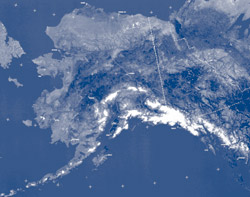|
|||||||||||||||||||||||||||||||||||||||
 |
|||||||||||||||||||||||||||||||||||||||
|
|
|||||||||||||||||||||||||||||||||||||||
|
|
Rise of Obesity in Alaska Examined
Among Alaska Natives, the prevalence of obesity and obesity-related diseases such as diabetes and heart disease has risen dramatically in recent years. In the Yukon Kuskokwim region in southwest Alaska, diabetes rates went up 177 percent in the past five years. |
||||||||||||||||||||||||||||||||||||||
|
About the Report | About UW Medicine | Research | Community Service | Outreach | Clinical Leadership | Education | Past Events | Private Support | Related Links © 2002 - 2003 UW Medicine Maintained by UW Health Sciences and Medical Affairs Office of News and Community Relations Send questions and comments to drrpt@u.washington.edu |
|||||||||||||||||||||||||||||||||||||||











